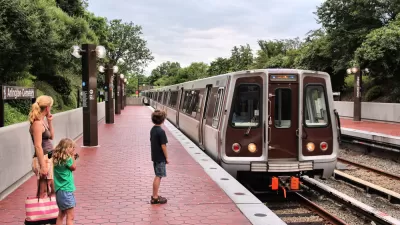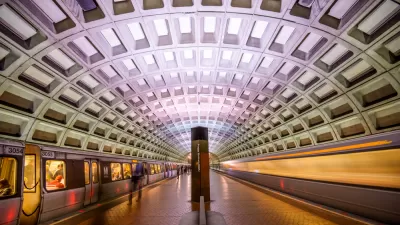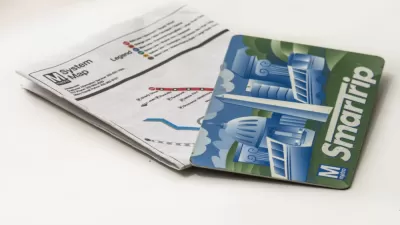D.C. Metro recently announced its intentions to buy anywhere from 256 to 800 new 8000 series railcars to replace the oldest cars in the system.

"Metro announced on Tuesday, September 4 that the agency is looking to buy anywhere from 256 to 800 new '8000-series' railcars to replace the oldest cars in the current fleet," reports Stephen Repetski.
Repetski's take on the new order of railcars, announced in a Request for Proposals (RFP) and a press release, is that the new 8000 series cars won't advance much beyond the system's newest cars—7000 series cars that have been plagued with technical issues.
The new 8000s, "won’t have major new features like increasing the number of doors per side or include open gangways, which would increase space for passengers and allow them to walk through cars," according to Repetski. Instead, 8000s will have "small tweaks and 'popular features'," like digital advertising screens, digital system maps, power outlets, additional handholds, and lighting and ADA improvements.
Another key point to consider from the RFP is the wide spectrum of potential cars that Metro intends to buy, anywhere from 256 to 800. The flexibility allowed by that spectrum could allow Metro to buy cars for years, replacing 40-year-old 2000/3000-series railcars and 20-year-old 6000-series railcars. The new railcars will also create new problems elsewhere in the system that will need to be addressed by system planners and engineers.
FULL STORY: Metro Reasons: Metro’s newest railcar order begins to take shape

Alabama: Trump Terminates Settlements for Black Communities Harmed By Raw Sewage
Trump deemed the landmark civil rights agreement “illegal DEI and environmental justice policy.”

Study: Maui’s Plan to Convert Vacation Rentals to Long-Term Housing Could Cause Nearly $1 Billion Economic Loss
The plan would reduce visitor accommodation by 25% resulting in 1,900 jobs lost.

Why Should We Subsidize Public Transportation?
Many public transit agencies face financial stress due to rising costs, declining fare revenue, and declining subsidies. Transit advocates must provide a strong business case for increasing public transit funding.

Paris Bike Boom Leads to Steep Drop in Air Pollution
The French city’s air quality has improved dramatically in the past 20 years, coinciding with a growth in cycling.

Why Housing Costs More to Build in California Than in Texas
Hard costs like labor and materials combined with ‘soft’ costs such as permitting make building in the San Francisco Bay Area almost three times as costly as in Texas cities.

San Diego County Sees a Rise in Urban Coyotes
San Diego County experiences a rise in urban coyotes, as sightings become prevalent throughout its urban neighbourhoods and surrounding areas.
Urban Design for Planners 1: Software Tools
This six-course series explores essential urban design concepts using open source software and equips planners with the tools they need to participate fully in the urban design process.
Planning for Universal Design
Learn the tools for implementing Universal Design in planning regulations.
Smith Gee Studio
Alamo Area Metropolitan Planning Organization
City of Santa Clarita
Institute for Housing and Urban Development Studies (IHS)
City of Grandview
Harvard GSD Executive Education
Toledo-Lucas County Plan Commissions
Salt Lake City
NYU Wagner Graduate School of Public Service





























